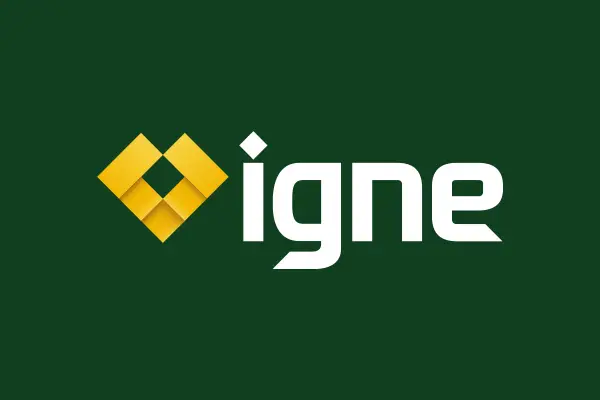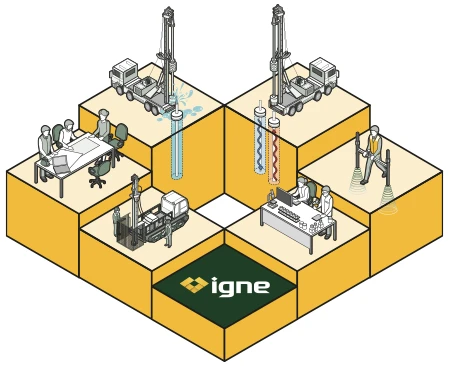

Drainage Connectivity & CCTV Surveys: Comprehensive Solutions
Our Drainage Connectivity & CCTV Surveys provide essential insights into your site's infrastructure, ensuring safety and efficiency through expert analysis and innovative technology.
About
Understanding Drainage Connectivity & CCTV Surveys
Drainage connectivity and CCTV surveys are essential components of site investigation, providing detailed assessments of underground drainage systems.
These surveys are designed to map out the existing drainage networks, identify any potential blockages or defects, and ensure that drainage systems are functioning correctly.
By using remote-controlled cameras to inspect drainage pipes, CCTV surveys provide a visual record of the internal condition of the drainage infrastructure, helping to prevent unforeseen drainage issues during construction or after development.
In the context of site investigation, drainage connectivity surveys are often conducted to establish how drainage systems on a site connect to the surrounding infrastructure. This is especially important for new developments where understanding the drainage network is critical for avoiding flooding, water ingress, or compliance issues with local water authorities.
Combining drainage connectivity mapping with CCTV inspections offers a comprehensive approach to assessing the drainage conditions of a site, allowing for both planning and maintenance strategies to be developed.
Whether for residential, commercial, or large-scale infrastructure projects, drainage connectivity and CCTV surveys are fundamental in understanding the subsurface drainage networks and ensuring that they are adequate and operational.

Benefits
Why Choose Our Drainage Connectivity & CCTV Services?
Commissioning drainage connectivity and CCTV surveys is a proactive approach to managing and mitigating risks associated with drainage systems. There are several compelling reasons to conduct these surveys, and the benefits extend far beyond simple compliance
Prevent Drainage Failures & Flooding
One of the key reasons to commission drainage connectivity and CCTV surveys is to prevent drainage failures that can lead to flooding or water ingress. By identifying potential issues early—such as blockages, damage, or insufficient capacity—you can take steps to rectify the situation before it becomes a major problem, saving time, money, and preventing damage to the surrounding site.
Ensure Effective Drainage Design
Drainage connectivity surveys provide vital information about how a site’s drainage network connects with the wider system. This is especially important during the planning and design stages of a project, as it ensures that the proposed drainage system will integrate seamlessly with the existing infrastructure. This information helps avoid drainage issues later in the construction phase and ensures compliance with environmental and water authority regulations.
Cost-Effective Maintenance Planning
CCTV drainage surveys offer a clear visual record of the condition of underground pipes and culverts. This enables early detection of damage, wear, or blockages that may otherwise go unnoticed until they cause major issues. Identifying these problems early allows for timely and cost-effective maintenance, preventing more expensive repairs or disruptions during construction.
Reduce Environmental Impact
Ensuring that drainage systems are functioning properly helps reduce the risk of contamination, pollution, or flooding, which could negatively impact the surrounding environment. Drainage connectivity surveys can identify improper connections or leaks, enabling corrective measures that protect local watercourses and ecosystems.
Improve Stakeholder Confidence
By commissioning thorough drainage connectivity and CCTV surveys, you can provide stakeholders—such as investors, developers, and regulatory authorities—with confidence that the site’s drainage system has been thoroughly assessed. This not only reduces risk but also demonstrates that due diligence has been carried out, ensuring project success and compliance.
Process
How Drainage Connectivity & CCTV Surveys are Designed, Planned, and Carried Out
Ground investigation utility avoidance surveys follow a structured process to ensure that all utilities are detected, mapped, and effectively avoided. At Igne, we use a combination of advanced technology and proven methodologies to deliver high-accuracy results that help safeguard your project.
Here’s a breakdown of how these surveys are designed, planned, and executed:
- Initial Planning & Site Assessment
The first step in a drainage connectivity and CCTV survey is to conduct an initial assessment of the site. This involves reviewing existing drainage plans (where available) and identifying the key objectives of the survey. The planning phase ensures that the survey targets the correct areas and that the right equipment is used based on the site’s drainage complexity. - CCTV Inspection
Once the planning phase is complete, a remote-controlled CCTV camera is inserted into the drainage pipes. The camera is guided through the system, recording high-resolution footage of the interior condition of the pipes. This footage provides a clear visual record of any blockages, damage, or deterioration within the drainage system. The CCTV footage is recorded and stored for later analysis.
- Drainage Connectivity Mapping
While the CCTV camera is inspecting the pipes, the survey team simultaneously maps out the drainage connectivity. This involves using surface markers and sensors to identify the precise routes of the drainage pipes and their connections to the wider drainage network. This data is essential for understanding how the site’s drainage system interacts with surrounding infrastructure, ensuring that it can handle the required water flow. - Data Analysis & Reporting
Once the CCTV footage has been recorded and the drainage connectivity has been mapped, the data is carefully analysed by the Igne survey team. Any defects, blockages, or risks identified during the inspection are highlighted in a detailed report. The report also includes recommendations for maintenance or repairs, if necessary, as well as a clear map of the site’s drainage connectivity. - Ongoing Monitoring & Support
For larger or long-term projects, Igne offers ongoing monitoring services to ensure that the drainage system continues to function effectively throughout the construction process. Regular inspections and CCTV surveys can be carried out to identify any emerging issues, helping to avoid unexpected disruptions or costly repairs.
Learn More
Frequently Asked Questions about Drainage Connectivity & CCTV Surveys
- What is a drainage connectivity survey?
A drainage connectivity survey is a type of survey that maps out the layout and connections of a site’s drainage network. It identifies how drainage pipes connect to the wider drainage system, providing vital information for planning and maintaining effective drainage on-site.
- Why are CCTV drainage surveys important?
CCTV drainage surveys provide a visual inspection of the interior of drainage pipes. They help detect blockages, damage, or deterioration that could lead to flooding or drainage failure. These surveys are essential for maintaining the health of the drainage system and preventing costly repairs down the line.
- What equipment is used in a CCTV drainage survey?
CCTV drainage surveys use remote-controlled cameras that are inserted into drainage pipes. The cameras can capture high-resolution footage of the pipe’s interior, allowing for a thorough inspection without the need for excavation.
- How often should drainage CCTV surveys be conducted?
The frequency of CCTV drainage surveys depends on the site’s drainage infrastructure and usage. For sites with a history of drainage issues, more frequent surveys may be necessary to monitor the condition of the pipes. For new developments, a survey should be conducted during the planning phase and periodically throughout the project lifecycle to ensure the system remains functional.
- Can a CCTV drainage survey identify all types of drainage issues?
Yes, CCTV drainage surveys are highly effective at identifying a wide range of drainage issues, including blockages, root intrusion, pipe damage, and corrosion. The high-resolution footage provides a clear view of the inside of the drainage system, allowing for accurate diagnosis and recommendations for repairs.
- How long does a drainage connectivity and CCTV survey take?
The duration of the survey depends on the size and complexity of the site’s drainage system. Smaller sites can be surveyed in a matter of hours, while larger or more complex sites may take a day or longer. The survey time also depends on factors such as the condition of the pipes and access to the drainage network.
- What happens if a problem is found during the CCTV survey?
If the CCTV survey identifies a problem, such as a blockage or pipe damage, Igne will provide recommendations for the necessary repairs or maintenance. In some cases, the issue can be resolved quickly through cleaning or minor repairs, while more serious problems may require more extensive work.
The Next Step
Protect your project from drainage issues with our comprehensive drainage connectivity & CCTV surveys.
Contact Igne today to learn more about our survey services and discover how we can help you de-risk your site investigation and development projects.
Explore the full range of surveys we offer to ensure the success of your project from start to finish.
